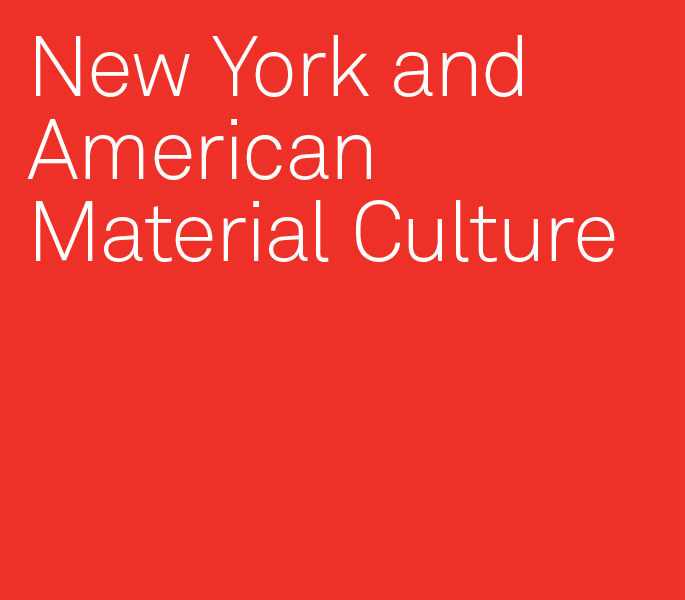|
|

|
|
|
Mónica Domínguez Torres, our next scholar-in-residence, will join us in-person from Monday, March 21 to Friday, March 25. She will meet with students and faculty, visit a course, and present an informal seminar to the BGC community, in addition to delivering the Mr. and Mrs. Raymond J. Horowitz Foundation Seminar in New York and American Material Culture.
Born and raised in Venezuela, Mónica Domínguez Torres obtained an MA in museum studies and a PhD in the history of art from the University of Toronto, Canada. In September 2003, she joined the Department of Art History at the University of Delaware, where she serves as associate professor and director of graduate studies, and holds a joint appointment in Latin American and Iberian studies. She specializes in the arts of the early modern Iberian World, with particular interest in cross-cultural exchanges between Spain and the Americas during the period 1500–1700. Her first book, Military Ethos and Visual Culture in Post-Conquest Mexico (Ashgate, 2013), investigates the significance of military images and symbols in sixteenth-century Mexico, showing how certain martial notions and symbols created cultural bridges between Mesoamericans and Europeans. She has also published several essays on the production, regulation, and consumption of Indigenous heraldry in Mexico and Peru. Since 2009, she has worked on her second book, Pearls for the Crown, which analyzes a series of early modern artworks related to the Atlantic pearl industry. Her research in this field has been recognized with grants and fellowships from the National Endowment for the Humanities, the Getty Research Institute, the Renaissance Society of America, and Bard Graduate Center, among others.
|
|
|
|
Community Coffee Hour
Monday, March 28, 4–5 pm
38 West 86th Street, Lobby
All students, faculty, and staff are invited to attend an informal gathering with Mónica Domínguez Torres. Light refreshments will be served.
|
|
Classroom Visit
Tuesday, March 29, 9:30 am–12 pm
38 West 86th Street, 5th Floor Classroom
Mónica Domínguez Torres will join “University Museums: Collections in Academia & Their Uses” with Professor Ivan Gaskell.
|
|
|
|
|
The Mr. and Mrs. Raymond J. Horowitz Foundation Seminar in New York and American Material Culture
“Heavenly Pearls: Nature, Religion, and Politics in Habsburg Spain”
Tuesday, March 29, 6–7:30 pm
38 West 86th Street, Lecture Hall
In 1616, the image of Our Lady of the Sagrario was placed in her own chapel at Toledo Cathedral, splendidly covered with various pearl-studded garments, including a cloak embroidered with 78,000 natural pearls. The Virgin’s makeover coincided with the “pearl rush” that occurred in the Caribbean and the Pacific coasts of central America throughout the sixteenth and early seventeenth century. In this seminar, Professor Domínguez uses the Virgin’s luxurious garments as a springboard to explore some of the connotations and functions that the organic gems acquired in Spain under Habsburg rule. Believed since antiquity to be wondrously engendered, in imperial Spain pearls became the material of choice to exalt the immaculate nature of the Virgin Mary, a fundamental tenet within the Habsburg “universal monarchy.”
Register Here
This talk will be accessible via Zoom in addition to being held in-person at 38 West 86th Street.
|
|
Brown Bag Lunch
“Pearls for the Crown: Art and Materiality in the Age of Iberian Expansions”
Thursday, March 31, 12:15–1:15 pm
38 West 86th Street, Lecture Hall
This seminar will reflect on the theoretical and methodological premises that inform Professor Domínguez’s upcoming book Pearls for the Crown: Art, Nature and Power in the Age of Spanish Empire. In 1498, Christopher Columbus fortuitously found bountiful pearling grounds in the coasts of today’s Venezuela, which became Spain’s first main source of wealth until the rich silver mines of Peru and Mexico were discovered. Focusing on a selection of understudied artworks related to the Atlantic pearl industry, Pearls for the Crown analyzes how the marine gems were used as symbols of imperial power in early modern European art. It pays particular attention to the interplay between materiality, labor, and politics that drove artistic production in the aftermath of Columbus’ chance encounter with Native American cultures.
Register Here
This talk is only open to the BGC community and will be accessible via Zoom in addition to being held in-person at 38 West 86th Street.
|
Upcoming 2021-22 Residencies
Monday, April 4 to Friday, April 8, 2022: Alison Clarke
Monday, April 11 to Friday, April 15, 2022: Bénédicte Savoy
Monday, April 18 to Friday, April 22, 2022: Carlo Ginzburg
Monday, May 2 to Friday, May 6, 2022: Shamil Jeppie
|
|
COPY AND PASTE CODE BELOW TO MAILCHIMP
|